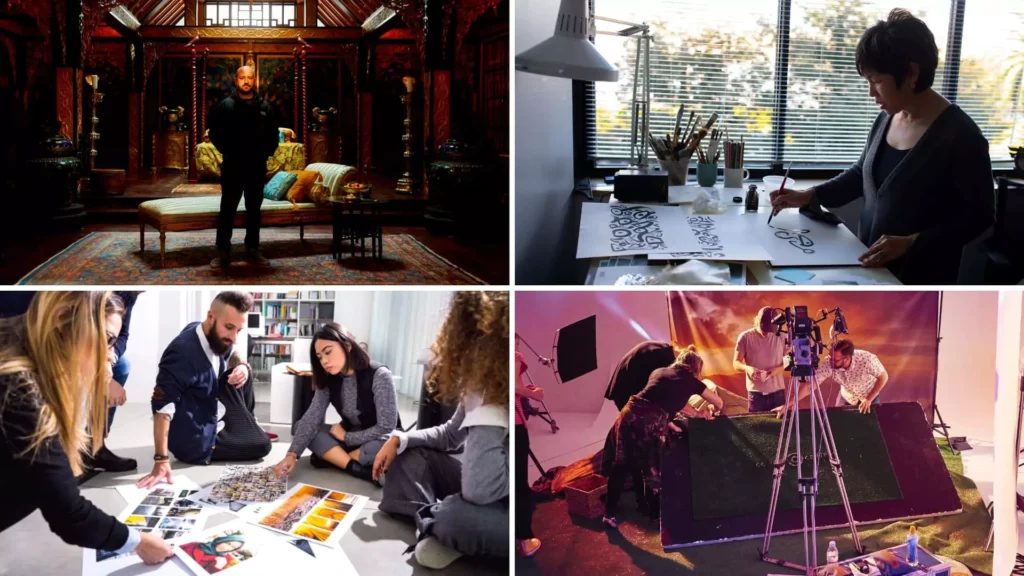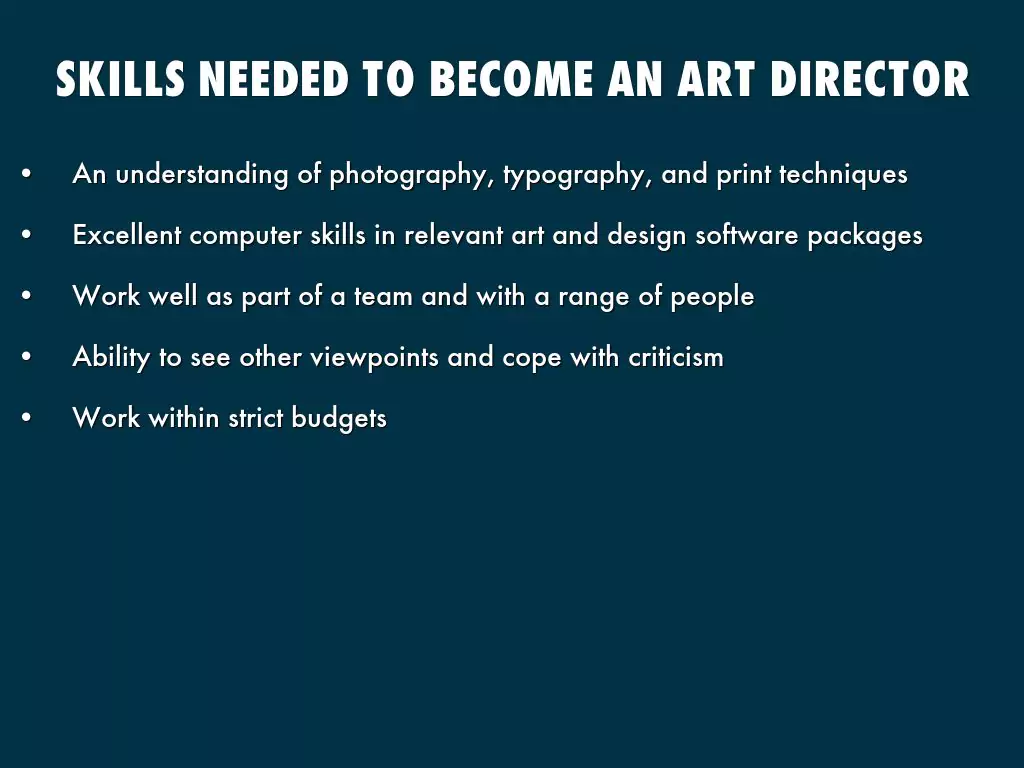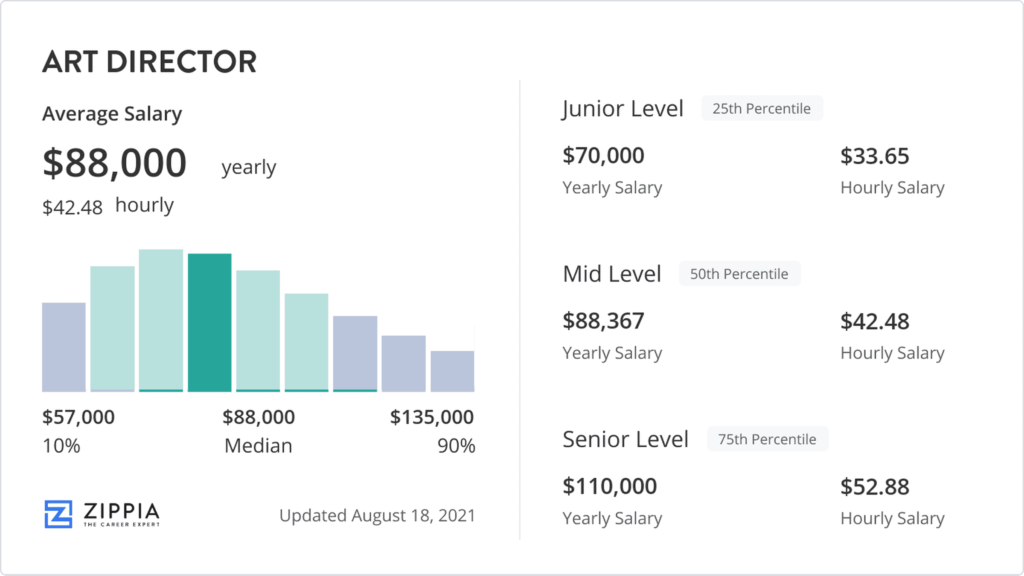What Does an Art Director Do? (And How to Become One)
In creative industries, art directors are pivotal in overseeing projects' visual design across different platforms such as publications, websites, films, and advertising campaigns. Their primary responsibility is ensuring the client's message is conveyed clearly and creatively to the intended audience. Inkbot Design, a Belfast-based Graphic Design and Branding Agency, specialises in art direction services tailored to assist businesses in developing strategic approaches towards achieving their goals.
The tasks of an art director encompass managing the entire creative process from inception to completion while focusing on visual design aspects. They closely collaborate with clients to gain insights into their objectives and translate them into graphic concepts. This involves extensive research, idea development, and effective coordination with designers, writers, and other professionals within the creative industry. By exercising comprehensive oversight over all project elements, art directors guarantee that the final product meets client expectations while effectively communicating their intended message.
Additionally, art directors must possess robust leadership skills alongside excellent communication abilities. Effectively conveying their vision to the creative team through clear directives and feedback is essential for success. Furthermore, adept management of budgets and timelines is crucial for ensuring projects are completed punctually while staying within financial limitations. Ultimately, by bringing innovative ideas to life and delivering visually impactful experiences for audiences across various mediums – art directors play an indispensable role in making creativity tangible.
Table of Contents
Definition and Overview of an Art Director's Role

The role of an art director is diverse, involving various responsibilities. They oversee the visual design aspects of projects, meet with clients to discuss project specifications and budgets, and carefully select visual elements for maximum impact. Art directors delegate tasks to creative professionals, supervise their work, and offer feedback to ensure project success.
One crucial responsibility of an art director is managing the visual design of a project. This includes deciding on colour schemes, typography, layout, and other design elements to create a visually cohesive final product. Collaborating with photographers and illustrators is also part of an art director's role in sourcing or creating visual assets that align with project objectives.
Another significant aspect involves meeting with clients for initial consultations. These meetings allow art directors to understand the client's vision, goals, target audience, and brand identity. This understanding helps develop a creative strategy aligned with these objectives while accurately representing the client's brand.
At Inkbot Design, our highly skilled art directors excel in selecting impactful visual elements. They possess a keen eye for aesthetics and utilise principles such as colour theory and composition to create engaging experiences that leave a lasting impression. Additionally, they are proficient in editing photographs and other visuals to enhance quality and seamlessly integrate them into overall designs.
In advertising specifically, art directors focus on creatively delivering the client's message by considering factors like colour palettes, style choices, and branding guidelines—all while leveraging moving images effectively within presentations. Collaboration with copywriters ensures alignment between visuals and written content for efficient communication. Art directors are also vital in selecting models, locations, and props during photo shoots or video productions.
Art directors curate page layouts, cover artwork, and visual styles for print media. They consider various elements such as presentation, style, aesthetics, branding, and storytelling in magazines, books, and online publications. Collaborating with editors, writers, and photographers is crucial to creating a visually captivating publication that maintains cohesiveness.
A comprehensive understanding from art directors is required to ensure the visual design resonates with readers and effectively conveys the intended message of the publication while aligning with the target audience and objectives.
Art directors working on branded content must possess graphic design knowledge and innovative imagery skills that accurately reflect the brand's identity and goals. Close collaboration occurs between branded content art directors and clients to develop visual concepts that engage their target audience while positively representing their brand. The harmonious integration of written content alongside visuals is also a key responsibility for branded content art directors who work closely with other creative professionals.
Inkbot Design's team of experienced art directors excel in carrying out these responsibilities flawlessly. Their extensive expertise spans diverse creative industries, enabling them to adapt their approach to each project's unique requirements. With their skilful guidance in art direction, they deliver impactful designs that showcase stunning visual appeal whilst ensuring effective communication of the client's message.
What does an Art Director do?

When it comes to advertising, the mission of art directors is to creatively and effectively convey the client's message. They consider elements like colour, style, branding, and the use of moving images to make a captivating presentation. Art directors collaborate closely with copywriters to ensure that visuals and written content align seamlessly to communicate the intended message. Additionally, they play a role in selecting models, locations, and props for photo shoots or video productions.
In print media, art directors take charge of page layouts, cover artwork, and visual styles for magazines, books, and online publications. Elements such as presentation, aesthetics, and storytelling come into play, along with considerations for branding consistency. Working alongside editors, writers, and photographers allows art directors to bring cohesion and engagement to these publications while keeping their target audience in mind, aiming to communicate the desired message effectively.
Branded content art directors possess graphic design expertise and the creative ability to produce innovative imagery reflecting a brand's identity goals. They work hand-in-hand with clients on conceptualising visuals that authentically represent the brand while engaging their intended audience. The collaboration extends beyond visuals as they coordinate efforts involving writers and other talented professionals, ensuring harmonious integration between visual content and written text.
At Inkbot Design, we have exceptional art directors who excel in all these roles. They possess extensive knowledge across various creative industries, enabling them to customise their approach based on specific project requirements. This expertise results in visually stunning designs with substantial impact when communicating our clients' messages effectively.
The responsibilities of art directors are diverse, requiring them to effectively manage various tasks to ensure the success of a project. In advertising, art directors focus on creatively and effectively delivering the client's message by considering elements such as colour, style, branding, and the inclusion of moving images in the overall presentation. Collaborating closely with copywriters ensures that visual and written components align seamlessly to communicate the intended message. Additionally, art directors are pivotal in selecting models, locations, and props for photo shoots or video productions.
Art directors determine page layouts, cover artwork selection, and visual styles for magazines, books, and online publications in print media. They carefully consider presentation aesthetics, storytelling, and brand identity while working alongside editors, writers, and photographers to create visually cohesive and captivating publications. Their comprehensive understanding of target audiences' preferences, demands, and goals enables them to design visuals that resonate effectively and convey desired messages accurately.
Branded content brings about its unique demands as well. Art directors specialising in this area must possess strong graphic design skills and a keen ability to generate innovative imagery that harmoniously aligns with the brand's identity and objectives. They form close partnerships with clients to develop visual concepts that successfully represent their brands and engage their target audiences. Further collaboration occurs between branded content art directors, writers, and other creative professionals to forge a seamless marriage between visual and written content elements in pursuit of harmony and coherency.
Skills and Qualifications Required for an Art Director

Art directors must possess various skills and qualifications to excel in their roles. These include creative abilities, leadership skills, effective communication, time management, and computer literacy. Aspiring art directors often pursue degrees in visual arts or related fields to develop their expertise.
At Inkbot Design, our art directors possess these essential skills and remain up-to-date with the latest trends in text graphics. This allows them to create inspiring designs for branded content, films, and other projects.
Creative abilities form the foundation of an art director's skill set. They must have a keen eye for aesthetics, attention to detail, and the ability to think outside the box when developing unique visual concepts. Leadership is also crucial since art directors guide and motivate their teams towards bringing their vision to life.
Effective communication ensures that everyone involved understands project objectives and fosters efficient collaboration. Time management is another vital skill as art directors juggle multiple tasks with different deadlines while maintaining strong organisational abilities.
Computer literacy is indispensable, too; proficiency in design software enables art directors to create and manipulate visual assets effectively.
While a relevant degree provides valuable knowledge of design principles and techniques, practical experience combined with a strong portfolio is highly regarded by employers within the industry.
Inkbot Design's art directors meet these requirements and stay updated on industry trends through continuous learning. Attending conferences workshops, and experimenting with new technologies all contribute to their innovative approach, resulting in impactful designs that resonate with audiences.
Collaboration with Other Creative Professionals

Art directors play a vital role in the world of creative professionals, closely collaborating with designers, writers, photographers, and others to align visual elements with the overarching concept. This requires effective communication and teamwork to bring the creative vision to fruition. At Inkbot Design, our art directors excel in fostering collaboration with clients and design teams alike. They leverage their leadership skills, receptiveness to criticism, and humble approach to deliver exceptional results consistently.
The role of an art director heavily involves collaboration – working closely alongside designers to cultivate visual concepts and provide valuable feedback on their work. This collaborative effort shape designs to align harmoniously with the overall vision while effectively conveying desired messages. Art directors also collaborate extensively with photographers and videographers to source or produce visual assets that enhance the design's impact.
For successful collaboration within a creative team, effective communication is paramount. Art directors must possess clear articulation skills for conveying their vision and providing constructive critique throughout projects. Additionally, they should remain open-minded towards receiving input from other team members and be adaptable enough to make necessary adjustments based on colleagues' expertise. Such a collaborative approach cultivates an environment conducive to creativity and innovation – yielding superior outcomes.
At Inkbot Design, our art directors boast extensive experience when it comes to collaborating harmoniously with both clients and design teams alike. They comprehend how crucial effective communication and robust teamwork are for ensuring project success. Their adept leadership enables them to guide the creative process efficiently while unifying all team members toward achieving shared objectives.
The Distinction Between an Art Director and a Creative Director
The roles of art directors and creative directors in the creative industry may seem similar, but their responsibilities and focuses set them apart. Art directors concentrate on the visual aspects of a project, dedicating themselves to decisions about design elements like colour, layout, and typography. They work hand-in-hand with designers to ensure the visuals align with the overall concept.
On the other hand, creative directors take on a broader scope. Their oversight spans conceptualisation to execution, collaborating closely with clients to understand goals and develop strategies that reflect these objectives.
Managing a team of creatives such as designers and writers, creative directors guide throughout the process while ensuring all components harmonise for desired outcomes. Although there can be overlap between art and creative director roles in specific contexts or smaller organisations/projects, as complexity increases, so does the necessity for dedicated creative direction.
Educational Requirements and Salary Comparison

Although a college degree in fine arts or a design-related field can be advantageous, becoming an art director is not always mandatory. The necessity of formal education varies, but completing a degree program equips individuals with a solid understanding of design principles and techniques. This educational background serves as a strong foundation for aspiring art directors.
In addition to formal education, practical experience and an impressive portfolio are highly valued in the creative industry. While completing degree programs allows individuals to develop their creative abilities and acquire hands-on experience through coursework and projects, the importance of real-world experience should be considered within this industry.
The average salary for art directors fluctuates depending on factors such as professional experience, specific industry involvement, and geographical location. On average, art directors earn $89,794 per year. It is important to note that individual salaries may significantly differ based on these variables above. For instance, those working in advertising or film industries typically enjoy higher remuneration when compared with professionals in other fields.
It's crucial to remember that salary is not the sole consideration when pursuing an art director career path. Creative fulfilment, opportunities to work on exciting projects, and the ability to make impactful visual storytelling contributions also play significant roles in job satisfaction. Aspiring art directors should prioritise honing their skills while building robust portfolios and gaining practical experiences. These efforts increase their chances of success within this competitive field.
Conclusion
Art directors are crucial in creativity by effectively translating clients' messages into visually captivating designs. Inkbot Design offers extensive services, encompassing art direction and branding expertise. Their team of proficient art directors has the qualifications, skills, and experience to deliver breathtaking designs that deeply resonate with audiences.
Whether advertising campaigns or website designs, Inkbot Design's art directors have an impressive track record of providing innovative solutions tailored to each client's unique requirements. Their collaborative approach, impeccable communication, and exceptional leadership abilities bring life into clients' visions while surpassing expectations. By leveraging Inkbot Design's expertise in art direction and branding, businesses can elevate their brand presence and leave an indelible mark on their target audience.
Discover how Inkbot Design can empower your business with a visually compelling brand identity by visiting their website at Inkbot Design. To discuss your design needs in detail, contact them at he***@in**********.com. Unleash the full potential of your visual communication as you elevate your brand alongside Inkbot Design.
